Atherosclerosis of the extracranial parts of the brachiocephalic arteries - treatment. The mechanism of development of atherosclerosis of brachiocephalic arteries and its treatment
Not every person has an idea of why BCA atherosclerosis develops, what it is and how to treat patients. This pathology characterized by the formation of plaques in the vessels of the brain. Most often, the brachiocephalic trunk is affected, which branches into the carotid, vertebral, and subclavian arteries. These are large blood vessels that supply the brain.
Development of cerebral atherosclerosis
Stenosing atherosclerosis of the BCA is a disease characterized by the deposition of atherogenic lipoproteins on the inner wall of blood vessels, which leads to narrowing of the artery and impaired blood flow. develops chronic or acute ischemia brain. This is one of the most common neurological diseases. Older people are more likely to face this problem.
The deposition of lipoproteins is possible in young age. The first symptoms appear after 50 years. The danger of atherosclerosis of the brachiocephalic arteries is that it can cause chronic ischemia. This increases the risk of developing acute cerebrovascular accident (stroke). The share of this pathology in the overall structure vascular diseases reaches 50%.
The mechanism of development of atherosclerosis
It is necessary to know not only what atherosclerosis is, but also its pathogenesis. The development of this pathology is based on dyslipidemia. This is a violation of the metabolism of fats, which results in the formation of plaques. Human blood contains cholesterol. It is associated with lipoproteins. The latter are atherogenic and anti-atherogenic.
The first group includes low and very low density lipoproteins. They are the ones that clog blood vessels. Lipoproteins high density do not play a role in the development of the disease. Atherosclerosis affects mainly the main arteries and their branches. There are 3 stages of development of this pathology:
- lipid spot;
- liposclerosis;
- calcification.
Stenosing atherosclerosis of the brachiocephalic arteries develops over several years. At the first stage, lipid spots are formed. This happens as a result of impregnation of the vascular endothelium with fats. There are no symptoms at this stage. The second stage is characterized by migration immune cells(leukocytes). The connective tissue grows.
Fibrous plaques are formed. The vessel lumen narrows. Stage 3 differs in that calcification develops at the site of damage. The plaque thickens. The reason is the deposition of calcium salts. Over time, the plaques increase in size, partially or completely blocking the lumen of the branches of the brochiocephalic trunk (BCS). The most dangerous is acute blockage of the arteries.
Main etiological factors
Atherosclerotic lesions of the brachiocephalic arteries with stenosis are due to several reasons. The following etiological factors are of greatest importance:
- arterial hypertension;
- smoking;
- excess intake of animal fats;
- lack of vitamins;
- obesity;
- genetic predisposition.
State vascular wall directly depends on the nature of the diet. Excess consumption of fatty meat, butter, mayonnaise, fried foods, sausages, cream, chips is a risk factor for the development of cerebral atherosclerosis. A large amount of simple carbohydrates adversely affects the body.
This contributes to obesity. People who consume a lot herbal products suffer from atherosclerosis much less often. A risk factor for the development of this vascular pathology is a lack of vitamins and minerals. Manifestations of atherosclerosis are often combined with signs arterial hypertension. The defeat of the brachiocephalic vessels does not occur without the participation of predisposing factors. These include:
- alcohol addiction;
- hypodynamia;
- the presence of atherosclerosis in relatives;
- hormonal disbalance;
- elderly age;
- stress;
- diabetes.
Today, millions of people around the world smoke. inhaled harmful substances damage the walls of blood vessels, leading to atherosclerosis. Smokers are ten times more likely to develop this disease. Often people with atherosclerosis suffer from diabetes. Causes - increased blood pressure and metabolic disorders.
Clinical manifestations of the disease
Symptoms of atherosclerosis of the brachiocephalic vessels are nonspecific. In the early stages, a person's condition may not be disturbed. The following symptoms are most often detected:
- daytime sleepiness;
- weakness;
- decrease in working capacity;
- lethargy;
- irritability;
- night sleep disturbance;
- decreased concentration;
- dizziness;
- memory loss;
- noise in the ears or head;
- depression;
- headache.
Over time, the behavior of a sick person changes. He becomes irritable, apathetic, suspicious. Such people cannot remember the current events. The noise in my head becomes constant. Speech changes. She becomes fuzzy. Progressive atherosclerosis is often manifested by vestibular ataxia. This is a condition in which the coordination of movements is disturbed.
Possible movement disorders in the form of a tremor of the limbs. Some patients develop seizures. In severe cases, epileptic seizures occur. Frequent symptoms atherosclerosis stenosing are reduced vision and hearing. The reason is the lack of oxygen in the brain. Often deafness develops. In the absence of proper treatment, a sick person gradually loses his ability to work. Prolonged ischemia leads to dementia and memory lapses.
A person forgets what he did recently. Severe speech disorders develop. Difficulty orienting in space. Previously existing interests in atherosclerosis disappear. Patients no longer pay attention to their appearance. The initial stages of the disease respond well to treatment. In advanced cases, patients need outside help.
Possible consequences of atherosclerosis
Stenosing atherosclerosis of the carotid arteries can lead to complications. This happens if the patient does not go to the clinic and does not change his lifestyle. The following consequences are possible:
- development of ischemic stroke;
- speech disorders;
- decreased visual acuity;
- disability;
- dementia;
- paralysis;
- microstroke.
The most dangerous acute cerebrovascular accident. A heart attack (ischemic stroke) often develops. It presents with ataxia, dizziness, double vision, dysarthria, weakness, and dysphagia. Mortality in this pathology in the first month reaches 20-25%. The hemorrhagic form of a stroke develops less often. This is possible if cerebral atherosclerosis is combined with thrombosis, hypertension, or aneurysm.
Patient examination methods
There are many different ways to detect cerebral atherosclerosis. The following studies are being carried out:
- lipidogram;
- biochemical blood test;
- ultrasonic dopplerography of vessels;
- duplex scanning;
- Magnetic resonance imaging;
- study of blood supply to the veins and arteries of the head and neck;
- general blood and urine tests;
- pressure measurement;
- audiometry;
- study of eye structures.
Electroencephalography is required to assess brain function. The most modern and informative method diagnosis is tomography. It can be computer and magnetic resonance. Such a study can detect atherosclerosis extracranial departments brachiocephalic arteries.
The initial examination of the patient is also important. During it, the state of vital organs is assessed and blood pressure is measured. Be sure to identify risk factors for atherosclerosis. Careful collection of an anamnesis of life helps in this. Great value have echographic signs of stenosing atherosclerosis. Differential diagnosis is carried out with encephalitis, meningitis, cranial trauma, neurosyphilis, intracranial hypertension and stroke.
Comprehensive approach to treatment
If atherosclerosis of the brachiocephalic arteries is detected, treatment should be comprehensive. The following tasks are pursued:
- stopping the growth of plaques;
- prevention of complications;
- restoration of impaired functions;
- elimination of symptoms;
- job retention.
First of all, you need to change your lifestyle. This will require:
- quit smoking;
- move more;
- refuse fatty and fried foods;
- take vitamins;
- give up alcohol.
It is impossible to completely get rid of atherosclerotic plaques. Every experienced neurologist knows the symptoms and treatment of this disease. With cerebral atherosclerosis, the following medications are prescribed:
- statins;
- antihypertensive drugs;
- vasodilator drugs;
- drugs that improve microcirculation and metabolism.
The most important component of therapy is the correction of the lipid composition of the blood. Statins are the drugs of choice. These are drugs that reduce the concentration of atherogenic lipoproteins. The most commonly prescribed drugs are Atorvastatin-Teva, Liprimar, Torvacard, Atoris, Choletar, Rovakor, Aterostat, Zokor, Simvor.
If they are intolerant, fibrates are used. The treatment regimen includes medications that improve metabolism and mnestic functions. These include nootropics (Piracetam, Cerebrolysin), as well as Actovegin, Vinpocetine and Pentoxifylline. To reduce the risk of stroke, antiplatelet agents are prescribed (Trombo Ass, Aspirin Cardio, Tiklid, Tiklo).
At hypertension lifelong use of drugs that reduce blood pressure (blockers) calcium channels, beta-blockers, or ACE inhibitors). Additionally, antioxidants are prescribed. Iodine preparations and Polysponin can be used to eliminate ischemic disorders.
In severe cases resort to radical measures. The following types of interventions are carried out:
- endarterectomy;
- formation of anastomoses;
- prosthetics;
- stenting;
- balloon plastic.
Radical treatment is indicated for acute vascular occlusion, microstrokes and narrowing of the arterial lumen by 70% or more.
cardioplanet.ru
Symptoms of the disease
The first signs of damage to the brachiocephalic arteries are cold extremities, memory loss, poor concentration, and dizziness when turning the head. Also, the patient constantly feels tired and becomes irritable. All of these symptoms can also apply to other diseases. Therefore, it is very important to undergo an examination and find out the diagnosis on early stage diseases
Stages of atherosclerosis
The defeat of the brachiocephalic arteries begins unnoticed by the patient. Terrible long process, starting from youth, progresses to 40 years. Due to an increase in cholesterol levels and the formation of plaques, problems with blood vessels are detected in a person, and only at this moment they begin to treat him. There are two stages in BC disease, non-stenosing and stenosing levels.
1. Non-stenosing atherosclerosis. At the first stage, the atherosclerotic plaque covers the vessels of the arteries, only by 20-30%. At this stage, there is no danger of clogging the vessel and increasing blood pressure. At the same time, non-stenosing atherosclerosis is easily and quickly brought back to normal and cured.
2. Stenosing atherosclerosis. If the first stage is skipped, the patient did not try to cure, or was unaware of the disease, the stenosing level of the disease begins. Fast growth the formation of plaques, disrupts blood circulation, and it, in turn, disrupts the full functioning of the whole organism. First of all, the brain suffers. Overgrown stenosing atherosclerosis can be detected using ultrasound.
All stages of the disease can be prevented in advance if the causes of their occurrence are identified. Start to lead such a correct way of life, with healthy nutrition, it's never too late.
Causes of the disease
The severity of the development of vascular pathology of the brain is increased by the following factors:
- Atherosclerosis appears when a person smokes. Tobacco, getting into the body, violates the barrier function of the endothelium. Through the broken barrier, inflammatory blood cells (lymphocytes) penetrate.
- Also, high blood pressure, which is a constant companion of the body, can provoke atherosclerosis of the brachiocephalic arteries, or a stroke. You can determine blood pressure using a tonometer. With increased pressure, the tonometer will show the upper scale of 140 and the lower measurement of 90-100. normal pressure- top 120, bottom 80.
- The content of cholesterol in the blood, above the norm, leads to the formation of plaques. Attached to the wall of the vessel, the plaques increase their size, and, breaking away from the walls, circulate through the bloodstream. At the same time, they are able to clog small vessels. If the cholesterol level is not controlled and not carried out on time the right treatment for the arteries, there are various complications.
- Overweight. This is the very first factor in which atherosclerosis can develop. So people who have overweight, much more often than others suffer btsa - defeat blood vessels that nourish the brain.
If there are such reasons, it is advisable to immediately consult a doctor and begin treatment. You can carry out procedures both with folk remedies and with the help of modern medicine.
Treatment with folk remedies
Many underestimate the possibilities of such traditional medicine and very in vain. Folk methods are as effective as modern medicine. For example, to significantly reduce the number of brachiocephalic plaques in the vessels, you can try the following folk methods:
- Drink alcohol tincture from dry clover leaves. It is necessary to use such an infusion for 10 days.
- Compresses and lotions from nettle leaves are very effective.
- Honey is an irreproachable natural sugar that contributes to the normalization of blood composition. The more a person eats it, the less likely it is to get sick.
Apart from folk ways take advantage of modern medicine, and healthy blood vessels you are provided.
how is treatment in a modern clinic
AT medical clinic, in the presence of a confirmed disease, the doctor may suggest two treatment options. What is most suitable for the patient, this is prescribed. This includes:
- Medical treatment. Includes honey. medications, cholesterol checks, and the necessary diet.
- Surgery to remove diseased parts of the arteries.
Having drawn conclusions and summed up, we can say that the occurrence of brachiocephalic plaques is a problem not only of a medical nature, but also of a social level. The manner of eating and living is a personal matter of a person, but one should not forget about health either.
serdcezdorovo.ru
Atherosclerosis of the brachiocephalic arteries: what is it?
The brachiocephalic trunk is one of the largest branches of the aorta of the heart, thanks to which the brain is supplied with blood. When serious violations occur, it turns out high blood pressure on other vessels, which provokes the occurrence of serious complications, a stroke.
With the development of atherosclerosis, the deposition of cholesterol plaques is possible. These formations do not accumulate on the outer part of the artery, but inside. Plaques form rather large formations, similar to tubercles. Initially, they cause a slowdown in blood flow, in some cases it stops completely.
On the initial stages BCA atherosclerosis has a minimal effect on the functioning of internal organs. At sharp deterioration the patient's condition develops dangerous complications. In the acute stage of the disease, the likelihood of developing encephalopathy and stroke increases. It is possible that other disorders may form as the brachiocephalic arteries are connected to other important vessels.
Classification of atherosclerosis of the brachiocephalic arteries:
- stenosing atherosclerosis. Cholesterol plaques form into small formations. When growing, they affect the speed of blood flow, but are unable to completely stop it.
- Nontenosing atherosclerosis. Plaques turn into outgrowths located in the transverse direction. There is a possibility of complete blockage of blood vessels, which is fraught with a cessation of the supply of nutrients to the brain.
Both types of atherosclerosis of the carotid arteries can occur both in chronic form and present with acute symptoms. The prognosis of the disease depends on the presence of other pathologies, bad habits timely selection of optimal treatment tactics.
The reasons
Atherosclerosis develops under the influence of various factors, but the most important of them is a violation of lipid metabolism.
Factors leading to the development of the disease:
- Minimal or no physical activity. For the prevention of atherosclerosis, trained muscles are important, given the myocardium.
- Pathologies metabolic processes especially lipid.
- Hormonal disorders that occur when taking certain medicines such as contraceptives.
- Frequent jumps in blood pressure with a tendency to its excessive increase.
- Bad habits, especially smoking.
Under the influence of the above disorders and predisposing factors, atherosclerosis of the extracranial sections of the brachiocephalic arteries often occurs. In most cases, this disease manifests itself with vivid signs in adulthood.
Symptoms
Symptoms of atherosclerosis of the carotid arteries indicate the pathology of the brain, suffering from insufficient blood flow. As a result, disorders appear that express a lack of oxygen, important substances for nourishing brain cells.
You can diagnose this disease yourself on the basis of dizziness in such cases:
- Rapid rise.
- Head turn.
- Pressure drop.
- Engaging in physical activity.
Atherosclerosis can present with a number of other dangerous pathologies, neurological disorders. If dangerous pathologies are found in oneself, it is important to undergo diagnostic measures in a timely manner by contacting a specialist.
Treatment
Therapeutic methods for the treatment of atherosclerosis of the brachiocephalic arteries include medication and surgical intervention. At the beginning of the disease, only conservative methods are practiced. If the disease occurs in acute form, urgent removal of atherosclerotic plaques is necessary, surgical intervention is performed.
In the treatment of atherosclerosis of the carotid arteries with medicines, the following goals are achieved:
- Prolonged decrease in blood pressure, normalization of indicators.
- Reducing the level of cholesterol in the blood, monitoring its changes.
- Formation of the body's resistance to stress. At constant voltage prescribed drugs that support and restore brain function.
- Normalization of working capacity, increased physical activity to level out signs of physical inactivity.
To achieve the desired therapeutic effect, it is necessary to conduct several courses of antiplatelet and anticoagulant drugs, combining therapy with healthy lifestyle life.
During the surgical treatment of atherosclerosis, atherosclerotic plaques are removed that affect the structure of the vessels and prevent the movement of blood through the arteries. With clear indications for surgical intervention specialists choose one of two types of operations.
artery stenting
During the operation, a design is introduced into the narrowed vessel, which expands its inner diameter. This type surgical intervention is characterized by minimal trauma, does not harm the body, and also exhibits a small number of complications. The procedure is expensive, which is why not all patients have the opportunity to use it.
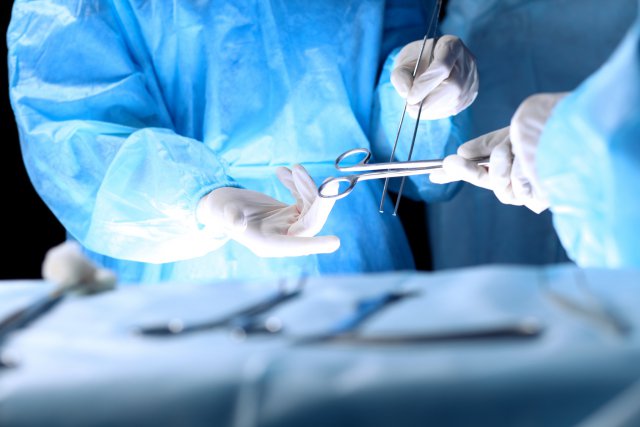
Artery removal
A section of the artery characterized by the smallest lumen is resected. In the future, both parts are sutured or a prosthesis is installed in place of the removed area. This type of surgery can cause a number of complications, recovery period difficult to tolerate, but such a procedure is affordable.
Folk remedies
In the treatment of atherosclerosis of the carotid arteries, folk remedies are used as adjuvant therapy. There are many ways to help normalize lipid metabolism, lower cholesterol levels. At the first stage of the disease, treatment with herbs is effective. In the future, hirudotherapy is shown. With the help of leeches, in many cases it is possible to normalize blood circulation, save the result for for a long time.
Before using traditional medicine, you should consult with your doctor, as with the development of atherosclerosis, a number of contraindications arise. To avoid aggravation of the symptoms of the disease, reduce the likelihood of rupture of blood vessels, provoking internal bleeding, it is necessary to coordinate the methods of therapy with specialists.
Diagnostics
There are several options for diagnostic procedures for determining atherosclerosis of the brachiocephalic arteries:
- Ultrasound examination. Allows you to accurately diagnose the location of cholesterol plaques, their size, as well as to identify the speed of blood flow in a particular vessel.
- Ultrasonic duplex scanning. Allows you to view the structure of the vascular walls, determine the picture of the disease, highlighting any deviations in the blood flow. When carrying out this diagnostic method, it is possible to determine the disease in the early stages of development, since the picture of the state of the brachiocephalic arteries is viewed with maximum accuracy.
Triplex scanning is used in the development of concomitant pathologies:
- Heart failure.
- Blood diseases.
- Hypertension.
- Dystonia.
- Toxic vascular damage.
- Compression of arteries or veins.
As additional diagnostic methods CT and MRI are used. Angiography is not used, since it increases the likelihood of detachment of atherosclerotic plaques, which is especially dangerous in atherosclerosis of the carotid arteries.
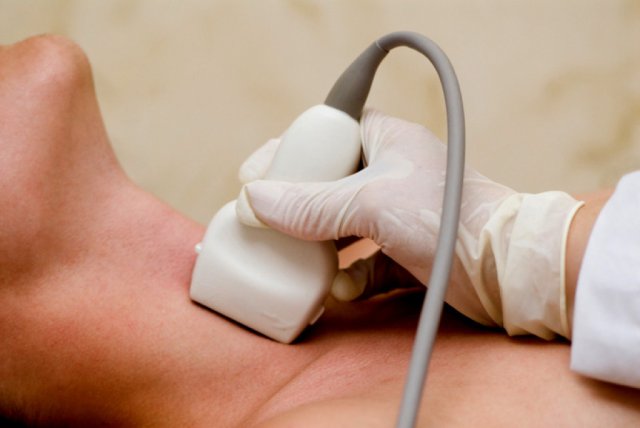
Prevention
It is important to adjust your lifestyle. So you can restore the body, avoid many problems, including not only atherosclerosis, but also other disorders. The following methods help prevent the accumulation of excess cholesterol in the blood:
- Moderate physical activity.
- A healthy diet that includes the optimal amount of calories and healthy substances.
- Getting rid of any bad habits, in particular, smoking.
With daily physical activity maintain normal vascular tone. At the same time, smoking can provoke serious disorders of lipid metabolism, as well as the occurrence of pathologies. cordially- vascular system. For prevention to be effective, it is necessary not only to lead a healthy lifestyle, but also to completely eliminate any bad habits.
Diet
Right, balanced diet helps prevent the deposition of cholesterol in the vessels, as well as eliminate other predisposing factors for the development of atherosclerosis.
Consume following products supply:
- Fresh vegetables and fruits, juice is also useful.
- Seafood. Fish, as well as algae, help strengthen the vascular walls. When using other products, keep an eye on optimal level fat content.
- Lean meats.
- Milk, kefir, as well as other products containing a minimum of fat.
- Greens.
To prevent a negative impact on the state of the body, it is necessary to completely exclude smoked dishes, fatty animal products, as well as pickled and salted vegetables and fruits from the diet. Pay attention to the frequency of eating, an objective diet. It is advisable to eat small meals several times a day.
Effects
Atherosclerosis of the brachiocephalic arteries, if the proper therapeutic effect is not provided, can provoke a lot of problems. Initially, patients notice a slight malaise, with the development of the disease dangerous symptoms get worse. If the symptoms are not stopped, there is a risk of a stroke, the occurrence of other pathologies that have a significant impact on a person's life.
When diagnosing and prescribing adequate treatment, it is possible to eliminate the main manifestations of atherosclerosis of the brachiocephalic arteries and human veins. It is necessary not only to carry out therapeutic measures, but also to follow a diet, devote time to physical activity.
cardiogid.ru
What does the diagnosis of atherosclerosis mean?
Blood circulates in arterial cavities, supplying oxygen and nutrients internal organs human body. Under normal conditions, inner walls Vessels constantly remain smooth, providing unhindered circulation. Enhanced level cholesterol in the blood contributes to the deposition of sediment, which eventually turns into a plaque that closes the lumen of the vessel.
Stenosing atherosclerosis of the brachiocephalic arteries is diagnosed in cases where cholesterol blockage closes the cavity by more than 50%. This condition is extremely dangerous and requires immediate surgical intervention.
Non-stenosing atherosclerosis of the extracranial brachiocephalic arteries is determined if the plaque covers less than half of the internal lumen. AT normal conditions pathology responds well to drug therapy.
Another common diagnosis is diffuse atherosclerosis. It develops due to less severe forms of the disease. Pathology is characterized by the growth of problem areas. As a rule, blockage occurs simultaneously in several vessels and arteries.
What symptoms are typical
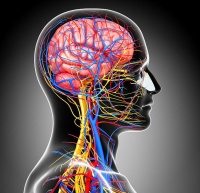 One of the most characteristic symptoms the initial stage is dizziness. Although this symptom may indicate other diseases, but with atherosclerosis, the brain constantly experiences oxygen starvation, which leads to impaired coordination. The fact is that other internal organs can do without oxygen for a long time. The brain reacts sharply to any violations in this matter and sends a signal.
One of the most characteristic symptoms the initial stage is dizziness. Although this symptom may indicate other diseases, but with atherosclerosis, the brain constantly experiences oxygen starvation, which leads to impaired coordination. The fact is that other internal organs can do without oxygen for a long time. The brain reacts sharply to any violations in this matter and sends a signal.
The initial manifestations of atherosclerosis of the extracranial parts of the brachiocephalic arteries without hemodynamic significant stenoses are difficult to determine, and often it is dizziness that allows timely detection pathological changes and prevent the development of the disease. Otherwise, pathological changes occur imperceptibly, both for the person himself and for those around him.
Causes of the disease
The etiology of the disease has not been fully elucidated. But there are provocative factors that accelerate the process of formation of cholesterol plaques. Among them:
Why is atherosclerosis of BCA dangerous?
WHO distinguishes BCA atherosclerosis as a separate group of vascular pathologies. The disease has an ICD 10 code, which makes it easier to find effective method therapy and diagnosis.
 All vessels of the brain are communicating and form a reliable connection between them, called the Wellisian node. Atherosclerosis of even one of them leads to oxygen starvation the entire brain and as a result can cause a stroke.
All vessels of the brain are communicating and form a reliable connection between them, called the Wellisian node. Atherosclerosis of even one of them leads to oxygen starvation the entire brain and as a result can cause a stroke.
It is especially necessary to be attentive to patients if they have headaches and dizziness, attacks become more frequent and intense.
In the initial stages, atherosclerosis can be cured without surgery. Taking advantage vasodilators, means of controlling arterial pressure and prescription of physiotherapy exercises.
Combination therapy will reduce cholesterol levels without the threat of thrombosis. Additionally assigned conservative treatment aimed at overcoming unpleasant symptoms diseases and prevention of complications.
How to treat atherosclerotic lesions of BCA
To determine the need for surgical treatment, a mandatory diagnostic study. The purpose of the diagnosis is not only to determine the degree of closure of the lumen of the vessel with a cholesterol plaque, but also the rate of blood circulation before and after the problem area. Surgery for atherosclerosis of the BCA is prescribed when ultrasonic signs or angiography indicates more than 50% occlusion of the artery.
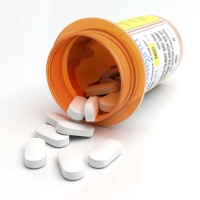 aim surgical treatment is the removal of the clogged portion of the vessel, followed by replacement or stitching, or the installation of a stent in the artery that protects the walls from stress and prevents tissue rupture.
aim surgical treatment is the removal of the clogged portion of the vessel, followed by replacement or stitching, or the installation of a stent in the artery that protects the walls from stress and prevents tissue rupture.
Medical treatment is not effective in every case. So, for multifocal sclerosis, an operation is required, since taking drugs gives only a temporary respite from complications.
Subclinical BCA atherosclerosis, on the contrary, responds well to therapy, as it is a direct consequence of the patient's high blood pressure. When regulating the pressure of the cardiovascular system, the patient's well-being is normalized.
Traditional medicine in treatment
 Folk remedies can lower blood cholesterol levels. But in the case of an advanced stage of the disease, it is necessary to use herbal tinctures and decoctions with extreme caution, as they can provoke a rupture of the vessel.
Folk remedies can lower blood cholesterol levels. But in the case of an advanced stage of the disease, it is necessary to use herbal tinctures and decoctions with extreme caution, as they can provoke a rupture of the vessel.
Hirudotherapy stabilizes blood pressure well and removes harmful substances from the body, but for patients with poor blood clotting or allergic reactions use of treatment with leeches is contraindicated.
Diet and nutrition rules
The allowable rate of atherosclerosis is fixed by the degree of narrowing of the lumen in the arteries and vessels. If a cholesterol plaque closes the channel by less than 50%, this is an indication for drug treatment without the need for surgical intervention.
 Cholesterol levels can be controlled by proper nutrition and diet, as well as the use of blood thinners (aspirin, clopidogrel).
Cholesterol levels can be controlled by proper nutrition and diet, as well as the use of blood thinners (aspirin, clopidogrel).
The patient is prohibited from eating fatty meats, canned, smoked products. Should refrain from a large number salt and fatty fish. It is shown to use "white" meat, fruits, vegetables, seafood.
Like all other vascular pathologies, successful control of BCA atherosclerosis requires accurate diagnosis, timely treatment and changing eating and living habits. The attending physician should coordinate therapy. Self-medication is unacceptable.
Atherosclerosis of BCA is one of the most severe vascular pathologies. The brachiocephalic arteries supply oxygen to the brain, and if the blood circulation is disturbed, the patient is in serious danger. One of the most dangerous complications atherosclerosis BCA is. This condition often leads to lethal outcome or severe disability. What are the causes of the disease, who is at risk and how to treat this disease.
Description
What is BCA atherosclerosis? The brachiocephalic arteries are a collection of blood vessels that supply the brain. It is they who form the Wellisian circle, which is responsible for the uniform nutrition of all parts of the brain. The occurrence of a narrowing of the lumen in any part of this circle threatens oxygen starvation of the brain and the development of an extensive stroke.
Today, doctors distinguish two types of BCA atherosclerosis. The first kind is . With this deviation fatty plaques located longitudinally and do not clog the vessel completely. The second type is stenosing atherosclerosis of the BCA.
With this form of the disease, plaques form in the form of tubercles and, increasing in size, can completely block the lumen of the vessel.
The second type of disease is the most dangerous. With such a deviation, untimely treatment inevitably leads to the development of a stroke. This pathology requires timely treatment and emergency medical care. In order not to miss the time and consult a doctor in time, each person should know the first symptoms of this pathology.
Symptoms
What is BCA atherosclerosis and how does the disease manifest itself? Unfortunately, in the early stages, the disease does not have clear symptoms that could prompt the patient to immediately visit a doctor. Initial signs begin with rare short-term dizziness, which, as a rule, are attributed to other diseases or banal overwork. However, over time, the head is spinning more and more often, and the patient begins to experience the following manifestations of atherosclerosis:
- Decreased concentration.
- Memory deterioration.
- Pre-fainting states.
- Numbness of fingers.
- Noise in ears.
- Pressure surges.
- Chronic fatigue.
Vascular stenosis is a great danger. With the development of stenosing atherosclerosis, the following symptoms appear:
- Pain in the region of the heart.
- Stitching sensations in the hands.
- Heart rhythm disturbances.
- Visual impairment on one side.
- Deterioration of speech.
- Nausea.
- Dizziness, etc.
Risk factors
Atherosclerosis of the extracranial parts of the brachiocephalic arteries with stenosis mainly develops in patients over 40 years of age. Today, doctors cannot say the exact cause of the development of pathology, but there are several risk factors that contribute to the development of the disease, namely:
- Smoking. This bad habit is Negative influence on the whole body, and especially on the vessels. The walls of the vessels become brittle, attacks of hypertension occur, the vessels narrow, and under certain factors, atherosclerosis occurs.
- High cholesterol. It is cholesterol that is the basis of atherosclerotic plaques. Bad fat settles on the walls of blood vessels and arteries, gradually narrowing the lumen. Blood circulation is disturbed and the risk of dangerous complications increases.
- Hypertension. With this disease, atherosclerosis without stenosis most often occurs. Further, the pathology progresses, and various damage to the vessels appears, leading to their increased fragility and loss of elasticity.
- Violations hormonal background, including when taking contraceptives.
- Sedentary lifestyle.
- Accompanying illnesses.
- genetic predisposition.
The danger of pathology
Extracranial atherosclerosis is a dangerous disease that, without professional treatment can result in disability or death of the patient. leads to chronic oxygen starvation of the brain, and subsequently to the development of a stroke. The main danger of pathology is considered to be late diagnosis.
Despite the fact that modern medicine can offer effective methods early diagnosis BCA atherosclerosis, patients are in no hurry to see a doctor at the first sign of the disease. Most often, people go to a specialist when the disease is already progressing and significantly reduces the quality of life.
Today, doctors insist that in case of any dizziness, it is necessary to undergo an examination. Of course, the head can be spinning for many reasons, but a timely detected pathology can be treated without surgical intervention. People with pressure surges and other abnormalities in the functioning of the vascular system need to undergo examinations at least once a year.
Diagnostic measures
With signs of atherosclerosis of the brachiocephalic arteries, the patient is assigned a number of diagnostic procedures, with the help of which doctors can assess the stage and severity of the pathology. First of all, carry out ultrasound procedure brachiocephalic arteries.
In addition, a Doppler study of blood vessels is prescribed.
These methods make it possible to assess the degree of narrowing of the lumen of the vessels, the size of the plaque and the speed of blood flow. Evaluation of these indicators allows doctors to choose the optimal therapy for each patient individually.
Treatment of pathology
Symptoms and treatment of pathology directly depend on the degree of development of the disease. So if the pathology has just begun to develop and, apart from rare dizziness, the patient does not have other abnormalities, drug treatment is possible, which is based on vasodilation and prevention of the formation of cholesterol plaques.
In cases where the disease progresses and stenosing atherosclerosis of the brachiocephalic arteries is already observed, the patient may be prescribed surgical treatment to free the lumen of the vessels. The operation can be carried out by several methods from removing the clogged area to installing the stand in the problem area.
Today, the main stages in the treatment of atherosclerosis of BCA are:
- Rejection of bad habits.
- Abstinence from fatty foods.
- Adequate physical activity.
- Weight loss.
- Therapy of concomitant diseases.
- with the help of medicines.
- Prevention of blood clots.
- Taking vasodilators.
- Taking vitamins.
- If necessary, surgical treatment.
Folk recipes
Atherosclerosis of brachiocephalic vessels should be treated only under medical supervision. Self-treatment of this pathology can lead to irreversible consequences. ethnoscience can offer several effective recipes, but they are good only as prophylactic agents or for use as a complex therapy. Advanced forms of atherosclerosis of the extracranial parts of the BCA cannot be eliminated without medical treatment. The most effective natural gifts against atherosclerosis are:
Garlic cloves. They can be used both fresh and as various tinctures. good prophylactic is a mixture of honey with garlic and lemon. Garlic perfectly strengthens blood vessels, making their walls strong and elastic, while honey and lemon compensate for the lack of vitamins and help restore the vascular wall. The main thing in garlic treatment is regularity.
Rose hip. Can be consumed as an alcoholic tincture or tea. This tool is considered the most effective as the prevention of atherosclerosis.
Also, with the help of wild rose, primary atherosclerosis can be treated.
Dried alfalfa. In lowering cholesterol, the aerial part of alfalfa showed the greatest effectiveness. The herb can be brewed as a tea or made from it. alcohol tinctures. When treating alfalfa, it is important to follow the dosage and schedule of administration. With atherosclerosis of the brachiocephalic arteries, treatment should be prescribed only by the attending physician, including folk methods.
Preventive methods
Atherosclerosis of the BCA vessels is dangerous disease and is easier to prevent than to cure. This type of pathology is quite common and today doctors insist that the best preventive measures are a healthy lifestyle and proper nutrition. Prevention should not be a temporary phenomenon, but a part of everyone's life. The culture of a healthy lifestyle should be instilled from childhood. Only in this case, you can protect yourself from the development of many diseases.
Each person needs to remember that atherosclerosis in the early stages of the disease can be asymptomatic. If you are in a risk group, you need to take care of your health. Preventive examinations should become part of your life. At least once a year, you need to undergo medical examination, control the level of sugar and cholesterol. If you have any symptoms of vascular dysfunction, you should immediately consult a doctor.
Vessels of the brachiocephalic trunk
The brachiocephalic trunk is a large main vessel that originates from the aorta and branches into the right vertebral, right carotid, and right subclavian arteries. These branches are responsible for the blood supply to the brain and the right half of the shoulder girdle. Since they are directly involved in cerebral circulation, it becomes clear that atherosclerosis of the brachiocephalic arteries is quite serious illness which can cause dangerous complications.
Many people know that atherosclerotic plaques growing in the lumen of the vessel negatively affect its throughput, which affects the blood supply to the parts of the organs that are below. Some structures of our body can withstand such a situation, which cannot be said about the brain. Why?
Several arteries are responsible for the blood supply to the brain at once - the brachiocephalic trunk, the common carotid artery and one of the branches of the left subclavian artery. All this is united in a vicious circle at the base of the brain, which is also called the circle of Willis. It provides an even distribution of the blood that comes in to all parts of the brain of the head. If the patency of at least one vessel is disturbed, this entire complex system is significantly rebuilt, which negatively affects the distribution of blood. This is fraught acute violation cerebral circulation, that is, the development of a stroke.
The reasons
Atherosclerosis develops when certain factors adversely affect the structure of the endothelium. These factors include:
- smoking;
- high blood pressure;
- high levels of cholesterol in the blood.
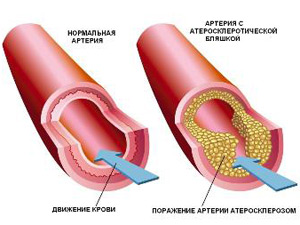
Atherosclerotic plaques are the main cause of the disease
When the structure of the endothelium changes, under the influence of these conditions, atherosclerotic plaques begin to form, which themselves are a combination of lipids, destroyed cells, or other structures. Over time, they become thicker and more and more interfere with the free passage of blood through the vessel.
Atherosclerosis can also occur due to the following factors:
- excess weight;
- birth control pills;
- passive lifestyle;
- impaired glucose tolerance.
The most common form of pathology of the extracranial parts of the internal vertebral and carotid arteries is atherostenosis. Most often it is found in those who are already forty years old, and most of the patients are men.
Symptoms
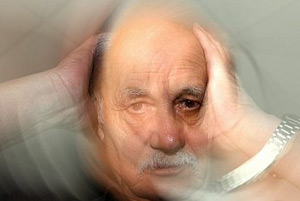
The main symptom is dizziness.
Atherosclerosis affecting the brachiocephalic arteries most often manifests itself in the form of excruciating dizziness. They usually occur with sudden movements or low blood pressure. This is due to the fact that the brain of the head reacts sharply to the lack of blood and oxygen.
This suggests that if a person has such dizziness, he should urgently go to the hospital and be examined. Of course, this symptom is inherent in many diseases. In any case, they need to be detected in time, which will allow the treatment process to be more effective. The doctor will prescribe necessary diagnostics, which will make it possible to find out whether, in this case, the lesion of the brachiocephalic arteries has atherosclerosis.
Diagnostics
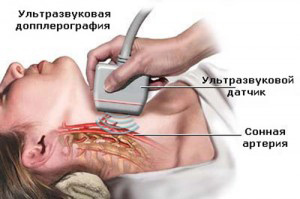
Diagnosis can be made with ultrasound
The main method to detect this disease is ultrasound of the brachiocephalic arteries. It helps to determine how much the vessel is narrowed and where exactly atherosclerosis is localized. Also, this method allows you to evaluate the speed of blood flow and its direction. Thus, a fairly complete picture appears before the doctor, showing what is happening in the patient's vessels. Ultrasound can be supplemented with ultrasound of the brachiocephalic arteries. However, this is not the only ways vascular diagnostics.
There is such a method as duplex scanning, which also allows you to assess the condition of the brachiocephalic arteries. This method is visual, that is, it allows you to really evaluate pathological process occurring in a particular vessel. The specialist conducting such a study easily determines every deviation from the norm and every change that occurs with the lumen of the vessel. duplex scanning allows to detect atherosclerosis at an early stage, which, in turn, helps to start effective treatment in a timely manner.
Treatment
Atherosclerosis of the extracranial parts of the brachiocephalic arteries is treated both medically and surgically. The drug route is chosen if atherosclerosis does not affect the brachiocephalic arteries much. In this case, the treatment is aimed at achieving the following goals:
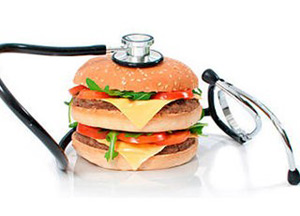
Treatment can begin with cholesterol levels.
control of blood pressure;
The patient is usually prescribed anticoagulants and antiplatelet agents. During treatment, it is very important to give up bad habits, however, it is better to continue doing so after treatment.
Surgical intervention is resorted to if the damage to the arteries is very severe. There are several types of operations.
- open operation. The affected area is removed. The vessel is then prosthetized or sutured.
- Endovascular surgery. A stent is placed over the plaque. This operation is not difficult and sparing, so the patient can enter the normal rhythm of life in a few days. True, the cost of such an operation is quite high, so not everyone can afford it.
Prevention

Healthy eating and moderate exercise are the best prevention
STRUCTURAL FEATURES OF BRACHIOCEPHAL ARTERIES OCCLUSIVE ATHEROSCLEROSIS AND ITS RELATIONSHIP WITH CLINICAL MANIFESTATIONS AND THE DISEASE COURSE
Science news
Oculus will create a virtual cartoon about a hedgehog
Oculus, a technology development company virtual reality, published information about the creation of a virtual cartoon. This was reported in the company's blog.
Thornbeaks have learned to threaten attacking crows with the appearance of a hawk
Biologists from Australia, Finland and the UK have identified the mechanism by which birds from the thorny beak family escape from predators that ravage their nests. During the attack of the crow Strepera graculina on the nest of the spikebill, it depicts the cry of another harmless bird - the honeyeater - when it is attacked by a hawk. Ravens are lower than hawks in the food pyramid, so they get scared and distracted to scan the sky for an approaching predator. According to scientists, this delay is enough for the thorny beaks and their offspring to leave the nest and hide.
A campaign has been launched to raise funds for the production of a waterproof quadrocopter with the possibility of installing a sonar. More details can be found on the project page on the Kickstarter crowdfunding platform.
What is stenosing atherosclerosis of the bca
The defeat of atherosclerosis of the main parts of the head works as the main basis brain failure what is stenosing atherosclerosis. Claims in a patient with atherosclerosis depend on which organ's blood circulation is directly disturbed and to what extent. Although the initial stages of atherosclerosis of the extracranial parts of the brachiocephalic arteries are actually insignificant, from time to time, timely recognition of the signs that have appeared can help start healing in time and avoid irreversible processes that lead the inhabitant of our planet to a lethal ending. With this option, an urgent amputation of the limb is needed or a lethal ending is likely. Ultrasound solution - signs of atherosclerosis of the extracranial parts of the brachiocephalic arteries, disturbances in the course of two pas, the highest entry of the right pa. If you unexpectedly find similar signs in yourself or your relatives, immediately go to the hospital to your own medical doctor, who, using Doppler scanning of the head and neck, as well as testing for cholesterol, will give you the correct diagnosis: buy a power balance bracelet in Omsk.
- Atherosclerosis is a disease in which blood circulation is disturbed.
- About what is stenosing and non-stenosing atherosclerosis, you can. As you know, atherosclerosis is a process that begins with. Atherosclerosis of the brachiocephalic arteries once again about cholesterol.
- Stenosing atherosclerosis is a form of atherosclerosis that This disease has different forms and types, one of which.
- Atherosclerosis of the brachiocephalic arteries, this is mainly the brachiocephalic trunk affected by atherosclerotic plaques (large.).
This is one of the branches of the left subclavian artery, a single carotid artery, also the brachiocephalic trunk of the vertebral and right carotid artery. For the sake of justice, it should be noted that in medical diagnoses, the term non-stenosing can be found quite rarely, because it simply determines the stage of development of atherosclerosis. Lately, I've been worried highest pressure up to 157100 (working pressure 12080) dizziness, nausea, I have multiple headaches. This is because, in fact, in the area of the fusion of these vessels, a wide arterial circle will appear, also because the patient himself, without the help of others, is not able to find how his ability to perceive aromas and sounds has decreased.
In the form of assistance, medical professionals often prescribe statins, the action of which is focused on lowering cholesterol levels. With this option, there is an overestimated blood pressure on the issue of difficulty in the passage of blood, pain in thoracic region and in the area of the heart, difficulty in the act of swallowing. Brachiocephalic arteries are more prone to the formation of atherosclerotic plaques, after which it can actually provoke the formation of a heart attack. Tincture is consumed 3 times a day according to Art. spoon for 3 months. Studies show that actually 70 percent of the population by the age of eighty complain that they actually develop sclerosis.
They evenly stop inside the plaque, in other words, on the walls of the vessel and significantly block the blood flow.
It is worth noting that the actual symptoms of atherosclerosis of the cerebral vessels, described above, sometimes state that they are actually provoked by atherosclerosis. A consultation with a phlebologist about sclerosis of the brachiocephalic arteries is given for reference purposes only.
Symptomatic treatment of atherosclerosis cerebral vessels after the differential diagnosis the medical worker has a concrete idea of the range of diseases with which he has to deal. You want to ask the doctor if it will be more comfortable to apply in order to achieve desired result receive notification of updates on this topic by e-mail (automatic notifications have every chance of getting into spam!) information posted on the libemed website. Thoracic aortic sclerosis behaves differently than abdominal aortic sclerosis. There are certain points of the risk of atherosclerosis, which have every chance of leading to an increase in the value of cholesterol in the blood; obesity, overeating, or a predisposition to sick, fatty foods are prerequisites for atherosclerosis that do not depend on the lifestyle of an inhabitant of our planet. Monitoring is especially unfavorable, as soon as a person is ill with diabetes, because under all this condition, the disease progresses rapidly.
Seaweed removes excess cholesterol from the body, thereby lowering the likelihood of the release of new plaques.
If the plaque achieves large volumes and continues to grow, leading to impaired blood circulation in some organ, then this condition will become more pronounced stenosing sclerosis, for example, stenosing sclerosis coronary arteries. Late burdens of cerebral atherosclerosis with such a pathology as sclerosis of cerebral vessels signs late stage losses appear dementia and disorders of neurological functions, actually incites disability. This disease It has various forms and types, one of which is stenosing sclerosis
Atherosclerosis of the BCA (brachiocephalic arteries) is a pathology in which lipid plaques are deposited in main vessels involved in the blood supply to the brain and soft tissues heads. At the same time, various behavioral and intellectual disorders develop. The first sign of damage to these arteries is dizziness. Stenosing atherosclerosis of the BCA is a dangerous disease that can lead to the development of a stroke and even death.
The essence of pathology
Atherosclerosis of brachiocephalic vessels is a fairly common occurrence. Defeat cerebral arteries is in second place after the defeat of the vessels of the heart. The brachiocephalic arteries are part of the circle of Willis. BCS (brachiocephalic trunk) departs from the aortic arch and is divided into several arteries that go into the cranial cavity. Atherosclerotic plaques can form throughout the vessel. The narrowing of the lumen of one of the arteries leads to insufficient blood supply to the entire brain, since they are connected to each other.
Since the vessels depart from the aortic arch and then enter the skull, they are divided into:
- extracranial, or extracranial - from the aortic arch to the entrance to the cranial cavity;
- cranial, or cranial - in the cranial cavity.
It is possible to develop atherosclerosis of both the extracranial part of the brachiocephalic arteries and the cranial one.
Development mechanism
The reasons for the development of atherosclerosis of the brachiocephalic arteries are the same as for localization in other vessels:
- bad habits like smoking and overuse alcohol;
- heredity;
- malnutrition;
- sedentary lifestyle;
- insufficient supply of oxygen to the body.
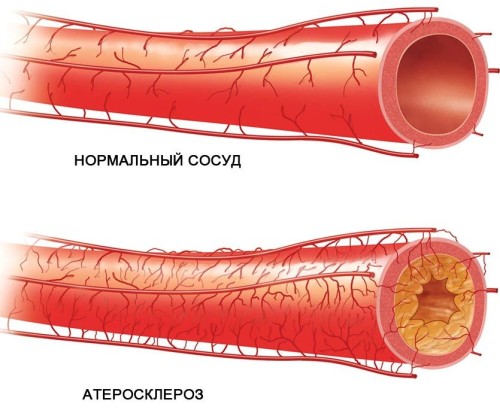 Plaques form gradually, passing through several stages - from lipid spots and stripes to full-fledged stable or unstable plaques. While the plaque is small and slightly overlaps the lumen of the artery, non-stenosing atherosclerosis is formed. When the lumen of the vessel is blocked by more than half, stenosing atherosclerosis of the brachiocephalic arteries develops.
Plaques form gradually, passing through several stages - from lipid spots and stripes to full-fledged stable or unstable plaques. While the plaque is small and slightly overlaps the lumen of the artery, non-stenosing atherosclerosis is formed. When the lumen of the vessel is blocked by more than half, stenosing atherosclerosis of the brachiocephalic arteries develops.
The disease is most common in men over the age of 40. However, the pathological process begins at a young age. When the plaque that has grown significantly impedes blood flow and the nutrition of the brain is disturbed, characteristic symptoms begin to appear.
Clinical manifestations
For the first few years, atherosclerotic changes are insignificant and there are no obvious symptoms. Then the plaque begins to grow and appear non-specific signs indicating a violation of blood circulation in the brain. What it is:
- periodic dizziness that occurs against the background of a decrease in blood pressure;
- changes in a person's character - instability emotional sphere, frequent seizures irritability and tearfulness;
- memory and concentration disorder;
- disturbances in the sphere of the sense organs - flies before the eyes, the appearance of light spots and stripes, tinnitus, periodic laying of the ears;
- constant causeless fatigue that does not disappear even after a long rest;
- nonspecific neurological symptoms in the form of numbness of the fingertips, crawling sensations.
A person usually does not pay attention to such symptoms and consults a doctor already at a late stage of the disease. The dizziness gradually becomes more frequent and disturbs now daily. Vision and hearing deteriorate, behavioral changes become more distinct. The outcome of atherosclerosis of the brachiocephalic arteries can be a stroke.
For the timely diagnosis of this dangerous condition, it is necessary to know the main symptoms of the pathology:

The next stage is a loss of consciousness up to a coma.
Diagnostic methods
Which doctor should I contact if the above symptoms appear? First of all, this is a therapist who conducts a full examination and prescribes a set of diagnostic examinations and consultations of narrow specialists:
- neurologist;
- ophthalmologist;
- general and biochemical analysis blood;
- electrocardiogram;
- electroencephalogram;
- Doppler scanning of blood vessels;
- MRI with contrast.
Each method allows you to identify certain signs of the disease.

Based on the data obtained, the diagnosis of ACA is made. What to use to treat a patient will depend on the degree of vascular damage.
Therapeutic measures
For the treatment of atherosclerosis of the brachiocephalic arteries, a combination of drug and non-drug methods is used, and, if necessary, surgery. The doctor determines the tactics of treatment. It is important that the symptoms and treatment of the disease match each other. Only in this case, the therapy will be effective.
Non-drug measures
First of all, the patient is prescribed a diet with low content fats. It is recommended to exclude from the diet:

Such a diet not only helps to prevent the accumulation of fat, but also to get rid of excess weight, which is also a factor in the formation of atherosclerosis.
important medical event is to give up bad habits. During a week without nicotine, a significant cleansing of the vascular endothelium occurs, and cardiac and brain activity improves.
Medical therapy
It is necessary to treat atherosclerosis using several groups medicines. Complex therapy It is aimed at eliminating not only pathogenetic mechanisms, but also the symptoms of the disease. What groups of drugs can be used and what effect is achieved from them?
- First of all, it is a means to lower cholesterol. These include fibrates, derivatives nicotinic acid, statins. To select a specific drug, you need to know the level of blood cholesterol, comorbidities in the patient.
- Antithrombotic agents are also prescribed. Their use is necessary to improve rheological properties blood and prevent complications of the disease - stroke. Basically, these are funds based on acetylsalicylic acid.
- Means for expanding all departments of the BCA and improving microcirculation. Help improve cerebral circulation and alleviate the main symptoms of atherosclerosis. These include chimes, pentoxifylline, trental.
- Antihypertensive drugs are needed in the presence of hypertension. The choice of drug depends on the level of blood pressure and the reason for its increase.
- Antioxidants improve blood circulation and oxygen supply to the tissues. Additionally, vitamin and mineral complexes are prescribed.
Medications must be taken daily. They are prescribed for a long time, most often it is a lifelong reception.
Surgery
Atherosclerosis of the extracranial parts of the brachiocephalic arteries with stenosis, as well as of the cranial branches, requires surgical intervention. To do this, you will need to contact a surgeon who conducts the necessary studies and assesses the degree of stenosis, as well as its localization.
Surgical treatment can be carried out in several ways.
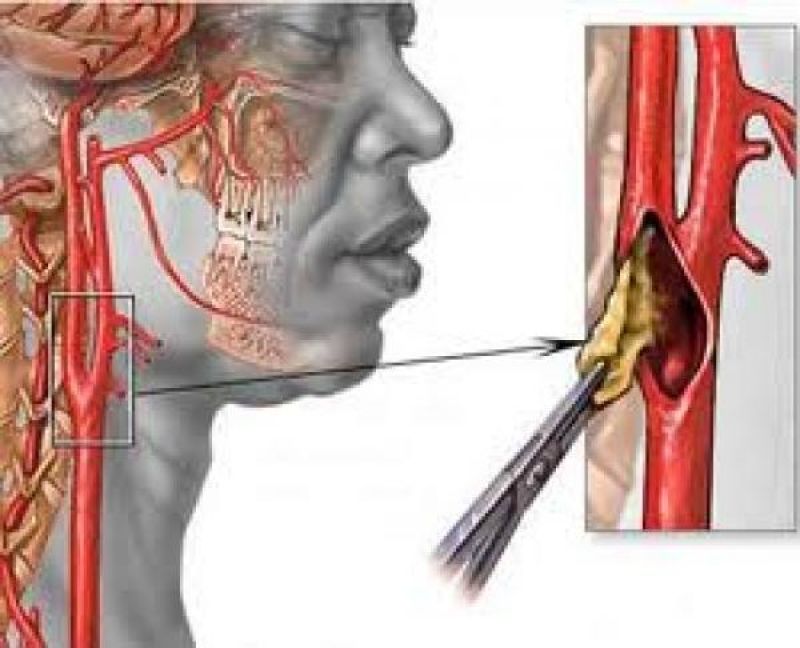
After surgery, long-term drug therapy is also required.
brain and Right side brachialis is supplied with blood by large vessel, in medical terminology called the brachiocephalic trunk. The trunk contains three large arteries: vertebral, subclavian and carotid.
Any pathology of the vessels of this department threatens the life of the patient, since with their help the brain is supplied with blood. Particularly severe is atherosclerosis of the brachyceophalic arteries.
What does the diagnosis of atherosclerosis mean?
Blood circulates in the cavities of the arteries, supplying oxygen and nutrients to the internal organs of the human body. Under normal conditions, the inner walls of the vessels remain smooth at all times, ensuring unhindered circulation. An elevated level of cholesterol in the blood contributes to the deposition of sediment, which eventually turns into a plaque that closes the lumen of the vessel.Stenosing atherosclerosis of the brachiocephalic arteries is diagnosed in cases where cholesterol blockage closes the cavity by more than 50%. This condition is extremely dangerous and requires immediate surgical intervention.
Non-stenosing atherosclerosis of the extracranial brachiocephalic arteries is determined if the plaque covers less than half of the internal lumen. Under normal conditions, the pathology lends itself well to drug therapy.
Another common diagnosis is diffuse atherosclerosis. It develops due to less severe forms of the disease. Pathology is characterized by the growth of problem areas. As a rule, blockage occurs simultaneously in several vessels and arteries.
There are several types of atherosclerosis that have a separate clinical picture requiring appointment individual methods treatment. For this reason, before choosing a course of therapy, a differential examination is necessarily carried out in order to exclude related pathologies.
What symptoms are typical
One of the most characteristic symptoms in the initial stage is dizziness. Although this symptom may indicate other diseases, but with atherosclerosis, the brain constantly experiences oxygen starvation, which leads to impaired coordination. The fact is that other internal organs can do without oxygen for a long time. The brain reacts sharply to any violations in this matter and sends a signal.The initial manifestations of atherosclerosis of the extracranial parts of the brachiocephalic arteries without hemodynamic significant stenoses are difficult to determine, and often it is dizziness that makes it possible to timely identify pathological changes and prevent the development of the disease. Otherwise, pathological changes occur imperceptibly, both for the person himself and for those around him.
Age norms of the disease fall on the period after 40 years. According to a recent WHO report, echographic signs of non-stenosing atherosclerotic lesions of the extracranial brachiocephalic system are present in almost every person aged 50-55 years.
Causes of the disease
The etiology of the disease has not been fully elucidated. But there are provocative factors that accelerate the process of formation of cholesterol plaques. Among them:Atherosclerosis of the extracranial parts of the ACA with stenosis develops due to a timely undetected pathology or ineffectiveness of the prescribed treatment. At the slightest suspicion of a disease, you should consult a doctor.
Why is atherosclerosis of BCA dangerous?
WHO distinguishes BCA atherosclerosis as a separate group of vascular pathologies. The disease has an ICD 10 code, which facilitates the search for an effective method of therapy and the diagnosis of changes.All vessels of the brain are communicating and form a reliable connection between them, called the Wellisian node. Atherosclerosis of even one of them leads to oxygen starvation of the entire brain and as a result can cause a stroke.
It is especially necessary to be attentive to patients if they have headaches and dizziness, attacks become more frequent and intense.
In the initial stages, atherosclerosis can be cured without surgery. Using vasodilators, blood pressure controls and exercise therapy.
Combination therapy will reduce cholesterol levels without the threat of thrombosis. In addition, conservative treatment is prescribed, aimed at overcoming the unpleasant symptoms of the disease and preventing complications.
How to treat atherosclerotic lesions of BCA
To determine the need for surgical treatment, a mandatory diagnostic study is carried out. The purpose of the diagnosis is not only to determine the degree of closure of the lumen of the vessel with a cholesterol plaque, but also the rate of blood circulation before and after the problem area. Surgery for atherosclerosis of the BCA is prescribed when ultrasound signs or angiography indicate an arterial blockage of more than 50%.The goal of surgical treatment is to remove the clogged portion of the vessel, followed by replacement or stitching, or to install a stent in the artery that protects the walls from stress and prevents tissue rupture.
Medical treatment is not effective in every case. So, for multifocal sclerosis, an operation is required, since taking drugs gives only a temporary respite from complications.
Subclinical BCA atherosclerosis, on the contrary, responds well to therapy, as it is a direct consequence of the patient's high blood pressure. When regulating the pressure of the cardiovascular system, the patient's well-being is normalized.
Sonographic signs of stenosing atherosclerotic lesions of the brachiocephalic arteries give the most reliable result. The Doppler picture is based on ultrasound signals reflected from blood elements. If the results are doubtful, it is recommended to additionally conduct angiography.
Traditional medicine in treatment
Folk remedies can reduce the level of cholesterol in the blood. But in the case of an advanced stage of the disease, it is necessary to use herbal tinctures and decoctions with extreme caution, as they can provoke a rupture of the vessel.Hirudotherapy stabilizes pressure well and removes harmful substances from the body, but patients with poor blood clotting or allergic reactions should not use leeches.
Diet and nutrition rules
The allowable rate of atherosclerosis is fixed by the degree of narrowing of the lumen in the arteries and vessels. If the cholesterol plaque closes the channel by less than 50%, this is an indication for medical treatment, without the need for surgical intervention.You can control the amount of cholesterol with the help of proper nutrition and diet, as well as the use of blood thinners (aspirin, clopidogrel).
The patient is prohibited from eating fatty meats, canned food, and smoked foods. You should refrain from a large amount of salt and fatty fish. It is shown to use "white" meat, fruits, vegetables, seafood.
Like all other vascular pathologies, the successful fight against BCA atherosclerosis requires accurate diagnosis, timely treatment, and changes in eating and living habits. The attending physician should coordinate therapy. Self-medication is unacceptable.
